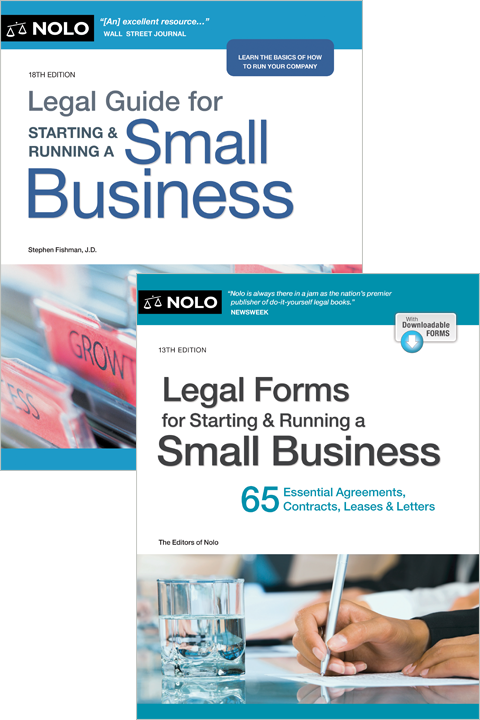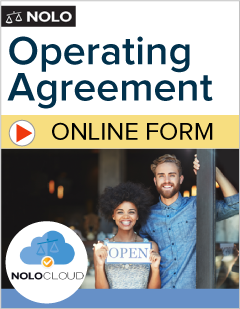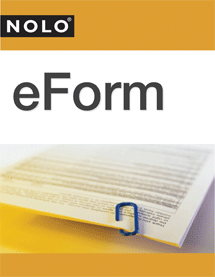Electronic contracts and electronic signatures are common and perfectly legal.
Most business contracts these days are made without handwritten signatures on paper copies. An electronic contract is a contract created and signed electronically. Electronic contracts are as legal and enforceable as traditional paper-and-ink contracts. Electronic contracts provide valid and convenient solutions for businesses—you can sign them anytime and anywhere.
What Is an Electronic Contract?
An electronic contract (an "e-contract") is an agreement created and signed electronically—no paper is used. The basic requirements to form an e-contract are the same as for a paper contract:
- an offer
- acceptance of that offer
- "consideration" (the exchange of something of value), and
- "mutual assent" (the intent to make the contract and be bound by its terms).
In the case of an e-contract, mutual assent includes the intent to make the contract electronically. (We cover the requirements for e-contracts in more detail below.)
What Is an Electronic Signature?
An electronic signature (an "e-signature") is a digital file or symbol—such as a scanned pen-and-ink signature or a typed name—that someone attaches to or places on a document to show that person's intent to sign the document. An e-signature can also come from an action, such as clicking on an "Accept" or "Agree" button.
People e-sign documents in many ways, including by typing their name into the signature area, pasting in a scanned version of the their signature, clicking an "I accept" button, or using more sophisticated digital signature technology (see below).
Examples of E-Contracts
Chances are you encounter e-contracts all the time. Here are some examples of e-contracts:
- A contract that you write on your computer and email to a business associate, and that the business associate emails back with an electronic signature indicating acceptance.
- A contract using an encrypted form and digital signatures, such as something completed with DocuSign or Adobe Sign. With these technologies, access to the contract often comes from a secure link in an email, and you sign it by clicking a button that says something along the lines of "Sign here."
- A "click to agree" contract that comes with online software, downloaded software, or website access. The user clicks an "I agree" button on a page containing the software license's terms or the website's terms of use.
- A purchase on an e-commerce site. Amazon, for example, offers to sell you an item at the listed price. When you click "Place this order," you are accepting the offer—including the terms on shipping, returns, and the like—and a contract to purchase the item is made.
Many people and businesses use software applications to request an e-signature. Common electronic signature software applications include:
- DocuSign
- Adobe Sign
- signNow
- Dropbox Sign, and
- Signaturely.
E-Contract and E-Signature Laws
Federal legislation enacted in 2000, known as the Electronic Signatures in Global and National Commerce Act (ESIGN), made most e-contracts and e-signatures as legal and enforceable as traditional paper-and-ink contracts and signatures for transactions in interstate and foreign commerce.
In addition, all states have adopted either the Uniform Electronic Transactions Act (UETA) or their own e-signature laws that make electronic signatures and contracts valid. You will need to research your state's e-signature law to determine when and how e-signatures are allowed. The combination of federal and state laws ensures that most e-contracts and e-signatures are valid regardless of where the parties live or execute the contract.
Additional E-Signature and E-Contract Requirements
Under ESIGN, UETA, and most state laws, people and businesses must take certain steps to make e-contracts and e-signatures valid and enforceable. These steps often include the following, but you should check your state's electronic signature laws for additional or different requirements.
- Get consent from signers. Signers have to show that they agree to using an e-contract or e-signing. In most cases, signers can show their consent by agreeing in an email or simply e-signing a contract. In some instances, though, the law might require a separate agreement to conduct business electronically.
- Fully inform signers about what their signature means. Signers are supposed to receive a clear indication that they are agreeing to be bound to the terms of a document when they sign it. It must be clear that they're not signing to indicate they merely received or reviewed the document.
- Give signers other options. E-signature laws make paper unnecessary in many situations, but some consumers and businesses still might want to use paper. Most e-signature laws require that anyone wanting to use paper be allowed to opt out of using an e-contract.
- Inform signers that they can withdraw consent. Signers need to be informed that they can withdraw their consent to use e-signatures or e-contracts at any time prior to signing. They also need an explanation of the procedure for withdrawing consent.
- Keep copies of the documents. The party creating the contract is supposed to keep electronic or paper copies of the signed documents and either provide copies to the other party or let the party know how to get copies.
To make sure that they're complying with the relevant law, businesses and people who regularly use e-contracts should consult with an attorney to review their electronic practices and disclosures.
Making Government Filings Electronically
The Government Paperwork Elimination Act (GPEA) addresses transactions between citizens and the federal government. The GPEA created requirements and incentives for the federal government to make electronic versions of its forms available online.
Many federal consumer transactions—such as paying taxes and registering trademarks—can now happen online. State governments have followed the federal government's example—for example, most now allow consumers to e-file and e-sign documents involved in corporate and vehicle registration.
Legal Documents That Must Be on Paper
Some legal documents—most of which aren't contracts—must be signed in traditional paper-and-ink format. ESIGN specifically excludes:
- wills, codicils, and testamentary trusts
- documents relating to adoption, divorce, and other family law matters
- court orders, notices, and other court documents like pleadings and motions
- notices of cancellation or termination of utility services
- notices of default, repossession, foreclosure, or eviction
- notices of cancellation or termination of health or life insurance benefits
- product recall notices affecting health or safety, and
- documents required by law to accompany the transportation of hazardous materials.
Even though ESIGN doesn't apply to these documents, some state laws might allow e-signatures under certain circumstances. For example, many courts allow pleadings and motions to be e-signed when the parties follow specific court procedures.
Also, ESIGN's e-contract exclusions are subject to change—ESIGN lets federal regulatory agencies allow e-signatures if the agencies determine that the relevant exclusion is no longer necessary for the protection of consumers, and eliminating the exception wouldn't increase the risk of harm to consumers.
Speaking With an Attorney
If you've received an e-contract you're expecting from a source you know who asks for your e-signature, you can probably determine whether it's safe to sign yourself. If it's a legitimate contract that doesn't need to be signed in ink-and-paper format, your e-signature is likely legally binding. Likewise, if you need someone else to sign a contract and an e-signature is allowed in that case, then you can probably send them an e-contract. Just make sure your document is secure and you've met the additional requirements.
But if you're not sure whether your situation allows for an e-contract, you should speak with an attorney. They can help you determine whether your e-signature is binding and whether your e-contract is a valid substitute for a paper contract. A lawyer can also help you review your contract to make sure it has the required elements to be enforceable.



